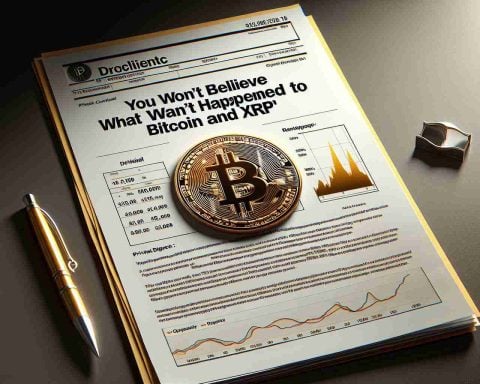A recent trend in the cryptocurrency market has sparked substantial interest as Bitcoin’s influence appears to be waning, paving the way for altcoins to gain traction. Investors are closely monitoring whether this shift signals a temporary phase or a more enduring change in the digital currency landscape.
Over the past few months, data indicates a decline in Bitcoin’s market dominance, even as it continues to hold the title of the largest cryptocurrency by market cap. This reduction in market share has opened up opportunities for alternative cryptocurrencies, commonly known as altcoins, to capture a larger portion of investors’ portfolios.
Several factors are contributing to this evolving dynamic. Experts point out that innovative developments and unique technological advancements in various altcoin projects are attracting attention. Additionally, increased regulatory clarity around newer digital assets has bolstered investor confidence, leading to a diverse and increasingly vibrant market.
Many are questioning whether this shift signifies a long-term transformation within the cryptocurrency domain. Analysts suggest keeping an eye on the performance and adoption of altcoins in comparison to Bitcoin, as this relationship will likely shape the future of the market.
As the landscape evolves, stakeholders are encouraged to stay informed and consider the potential of emerging cryptocurrencies as part of their investment strategies. Only time will tell if the altcoin surge is a fleeting trend or the dawn of a new era in digital currencies.
The Altcoin Ascendancy: What Does It Mean for Your Wallet and the World Economy?
As Bitcoin’s dominance over the cryptocurrency scene diminishes, a new wave of digital currencies, commonly referred to as altcoins, is rising to prominence. This shift has profound implications for economies, communities, and individuals worldwide. Let’s dive into some unheard aspects of this trend and explore its impact.
How Are Altcoins Affecting Global Economies?
As altcoins gain traction, they bring a broad spectrum of applications and utilities that Bitcoin often doesn’t offer. For instance, Ethereum’s smart contract functionality provides businesses with the ability to automate processes in a decentralized manner. This can lead to a reduction in costs and an enhancement in efficiency, particularly in cross-border transactions where traditional banking systems can be slow and expensive.
In emerging markets, altcoins often offer a more accessible financial inclusion opportunity. Take Ripple (XRP) for example; its technology facilitates faster and cheaper remittances, crucial for economies that rely heavily on funds sent back home from workers abroad.
Interesting Fact: The Environmental Impact of Altcoins
While Bitcoin has been criticized for its massive energy consumption due to its proof-of-work algorithm, some altcoins utilize more energy-efficient consensus mechanisms. For example, Proof-of-Stake (PoS) used by cryptocurrencies like Cardano and the newer version of Ethereum, significantly reduces energy usage, making these cryptocurrencies more environmentally friendly. This could align with global sustainability goals, giving such coins an edge in both perception and adoption.
Controversies: Are Altcoins the Future or Just a Fad?
While the rise of altcoins is undeniable, controversy lurks in their long-term viability. Critics argue that many altcoins are speculative and lack the solid foundation that Bitcoin has, making them prone to volatility and failure. Additionally, some altcoin projects have been linked to scams and fraud, raising concerns about their legitimacy.
Will altcoins offer substantial real-world applications, or will they become relics of a speculative era? This remains debated among experts and enthusiasts.
Advantages and Disadvantages of the Altcoin Surge
Advantages:
– Diversity and Innovation: Altcoins offer a wide variety of technological advancements and uses beyond just a store of value.
– Increased Accessibility: They provide financial services to unbanked populations and foster inclusive economic growth.
– Environmental Considerations: Many altcoins adopt greener technologies, appealing to environmentally conscious investors.
Disadvantages:
– Volatility and Risk: Altcoins can be highly volatile, posing significant risks to investors.
– Regulatory Challenges: While some regulatory clarity exists, in many jurisdictions, regulations around altcoins remain in flux.
– Potential for Scams: The decentralized and unregulated nature of some projects can make them targets for fraudulent schemes.
Questions on Future Impacts of Altcoins
– How will altcoins continue to disrupt traditional financial systems? As altcoins become more integrated into financial technology, banks, and businesses, they may further disrupt or complement existing financial systems.
– What measures can protect investors in the altcoin markets? Education and due diligence, along with emerging legal frameworks, may help safeguard investors against fraudulent activities.
For more insights into the cryptocurrency market and the rise of altcoins, you can explore resources like Cointelegraph or CoinDesk.
As the digital currency landscape evolves, individuals, businesses, and governments will need to stay informed and adaptive. Whether the current trend signifies a long-term shift or a temporary phase, it is an exhilarating time filled with potential and pitfalls.
















